1: The Shape of Understanding
The I-Ching, Taoist Theory, and Thoughts on Master Zhu's Teachings #1
A World Made of Layered Yin-Yang Pairs…
There are many descriptions and records on the roots and understanding of Taoism and the I-Ching. This is an essay of my understanding of this ancient system. The thoughts, ideas, and concepts here are my interpretation from conversations with Master Zhu, books I’ve read, and conversations with my classmates. Master Zhu has laid these ideas out in a logical/scientific method and my background is of a logical/scientific understanding as well, with that in mind, I hope to lay out a framework for understanding the modern world from the Taoist perspective using concepts that make up the I-Ching and its derivatives. I plan on using this essay as a way to present a conceptual vocabulary and as a reference and springboard to explore other ideas for future work I have planned.
I think it’s important to recognize who the ancient Chinese were who developed this understanding that rose out of pre-historic China. My view is that these ancients were human beings living and witnessing the same world, seasons, patterns we as modern human beings witness. I think all the ancient systems of understanding whether Native American, Chinese, Hindi, Western, etc. were all created by human beings thinking and observing this same world trying to make sense of the Universe in a way that made sense to them. As modern humans we are detached from the unknown that surrounds us, with these concepts I hope to open ideas and reestablish a relationship to the unknown.
When I first started studying with Master Zhu, I had some ideas on what I thought Taoism was. I’d read the Tao-de-Jing and some Zen texts, and I’d heard of the I-Ching. Over the past 14 years it has been a long arduous process, filled with questions and answers, a physical practice that changes your body, as well as tracking down Taoist concepts buried in ancient texts. I look back and if I had to give a definition for what I thought Tao was, I would call it the shape of knowledge, or the structure of our perception, or the natural arrangement of the human being.
There are many ways to approach the I-Ching and the Tao, a religious view, as a divination tool, and as a philosophical system, to name a few. The philosophical system is the approach and the way the conversations with my master have gone. We’ve touched on divination, but mostly we’ve focused on understanding health and as way to understand the modern world as it ebbs and flows through cyclic change. The concepts in this essay will cover Yin-Yang, Wuji, Taiji, the 4 appearances (Si-Xiang), the Bagua, 5 element theory (Wu-Xing), and how these structures are related to the Tao and the I-Ching.
My first interaction with the Tao was from a high school friend who had read the Tao-de-Jing, he talked about the “The Tao” as being called “The Way”. The idea came from the Chinese character for Tao (Figure 1). The understanding was that the radical (the left portion that runs along the left and along the bottom of the character) represented walking and is shaped like a foot.
My understanding of the Tao starts with this Chinese character, this character is a compound character with 2 parts, the radical “walking” and the second part which is the character for “head”. I think of this character as representing a head walking in the world. The character for Tao represents to me the study of how our heads (minds) move through and understand the world.
Figure 1
Wuji, Taiji, Yin-Yang
The main concepts of Taoism and how we understand this system, are the building block of all Taoist understanding. These concepts are Wuji, Taiji and Yin/Yang.
The roots of Taoism I think come from an uninhibited observation of the world. A view of the world built from what we perceive as human beings. We perceive cycles of night and day, seasons changing, cycles of the sun and moon, temperature and climate variations, emotional variations joy and fear. I remember walking through a business district watching the mountains while the sun set behind them, I realized the ancients who came up with this system understood that all we, as humans, ever really perceive and witness is change. As watchers of the world they developed an understanding of balance, change, and Yin/Yang. They also developed additional concepts that are represented in the Yin-Yang symbol, those concepts are Wuji and Taiji see (Figure 2).
Figure 2
Almost everyone is familiar with the symbol for Yin/Yang, it’s on coffee tables, pendants, and posters. In popular culture it represents good and evil, right and wrong, and other relationships between binary pairs. In this view Yin/Yang is often thought of as pairs of opposites, this idea of opposites is a somewhat stagnant view of the Yin/Yang symbol. I think of Yin/Yang as a complimentary, dynamic understanding of any relationship. To understand the origin of the Yin/Yang symbol as a symbol of change we must understand the progression and parts of the symbol as it shifts and moves.
Everything starts from a state of Wuji, an energetic state of stillness or formlessness. This is represented as an open circle. When I first ran into this concept, I thought it was the Void or nothingness, now I think of it as the preliminary state inherent in any situation before it appears, moves, or changes.
Wuji is an idea that is crucial to the understanding of dynamic change. It’s the preliminary state which we compare and understand everything. Wuji holds the potential of the entire Universe and is the state where everything is defined from. An example of Wuji is a winter garden, bare and brown, just dirt filled with potential. The garden is in a state of Wuji or absence. When spring comes, the garden fills with flowers and plants rising from the earth, this is the Yin/Yang split. This spring shift is the Taiji moment between winter and summer on a seasonal scale, the spring seedlings rising into the sky and the roots expanding through the earth is another layer of this same Taiji-Yin/Yang pattern.
Another example of the Wuji-Taiji- Yin/Yang interaction is with our thought process and our mind. If I say the word mountain you will think of a mountain. The state of your mind before the mountain appears is your mind in a state of Wuji. As we think of the mountain the idea is separated and becomes prominent in our minds, this is the Yin/Yang appearance as the mountain rises in our thoughts. As the thought fades, the image or thought of the mountain returns back into the Wuji of the mind.
When Wuji transforms from stillness, the movement or shift splits the state into Yin and Yang, Taiji is the line that separates Yin and Yang in the diagram. In our world I think of our perception of time where the present is the Taiji moment separating the past and future. When we analyze and think about time the present becomes an infinitesimally small instantaneous moment between the past and future. This triad of Wuji-Taiji- Yin and Yang. Is the basis for change and is the root of Taoist understanding and the I-Ching.
This cyclic pattern of absence-presence-absence surrounds every aspect of our existence. Civilizations rising and falling, life forms emerging living and then dying, illnesses manifesting and receding back into the Wuji of the body, the tides rising and falling with the cycles of the moon. These examples can all be seen as the pattern absence-presence-absence, or Wuji-Yin/Yang-Wuji.
The concept of Wuji is present in many systems of understanding, the native views of the Navajo and other native tribes, in the Judea/Christian tradition, and Modern Science. In the Navajo teachings, the First world, in their understating, is described as a world of darkness and water. In the Judea/Christian the first book of Genesis starts with “In the beginning God created the heavens and the earth, and the earth was formless and void”. In modern science the idea of the big-bang is that the entirety of the Universe is compressed into a singularity surrounded by the Void. I think all these views are describing a Wuji state, a state of formlessness or absence with unlimited potential.
The Pattern of the Tao
From Master Zhu’s teachings the pattern of the Tao is an infinite binary tree rising out of the Wuji state. A binary tree is a structure made of splitting yin-yang pairs. In the Taoist texts referring to the I-Ching Yang is represented as a solid line and Yin is represented as a broken line see (Figure 3). The intermediate splitting phase would be as when you observe something and you’re trying to figure out what you’re observing. When you figure it out, the experience has become solidified and you understand what you’re observing, this is the actualized Yin/Yang state as an understanding of our experience.
Figure 3
From Wuji comes the Taiji-Yin/Yang Pair structure. If we take each individual Yin and Yang expression and add an additional Yin/Yang pair we see the start of the shape of the binary tree, we can keep adding Yin/Yang pairs indefinitely. This Binary tree is an infinite binary fractal that branches off in all directions see (Figure 4).
Figure 4
When I figured out this understanding, I would walk around seeing the world differently. I would peer into the roots of ideas and search for their origins as they manifested into existence from a state of nothingness. I saw people shifting and wading through a symbolic world of stagnations and confusion. I saw the world in which we live as a sliver of the actual potential of what it could have been. If we look at the decision tree structure and follow it up through the branches, the path looks like a lightning bolt, an instantaneous flash of potential. If this path was 100 branches long, the possibilities could have been 100 fold with their possibilities. This understanding came from understanding the shape of Tao as an understanding of our perception and the world in which we live.
The I-Ching, It’s Development, and Modern Man
Here is a short history as I understand these ideas in relation to us as modern human beings. The I-Ching we see in the west is called the Zhou-Yi and was developed between 1000BCE and 750BC. The name Zhou refers to the Royal Zhou dynasty that ruled China between 1046 BC – 256 BC. I think the scholars during this time recorded the ideas held within the I-Ching, the ideas themselves I think are much older, possibly by 1000s of years. Where the recoding of these ideas reflected an understanding from millennia of collected observations of the world as it rose from pre-historic China.
The ideas I’ve laid out so far are thoughts coming from a modern man who lives in a culture that has an understanding of the concept of 0 (zero), the infinite, and fractal mathematics. In my mind the binary tree was the building block of all the Taoist ideas. I questioned this idea and asked a handful of people that work with these ideas “What came first the binary tree or the I-Ching?”. To my surprise they all said that they thought the I-Ching came first! As I reflected on this revelation, I thought “How that could possibly work?”. I now think that the patterns represented in the I-Ching were large changes and transformations they witnessed in the world and themselves. Through the years as their ideas transformed, their understandings changed, becoming more defined. They molded their ideas adding, concepts, and forms into what we recognize as the I-Ching.
With this historical context I look at the ideas I’ve generated from these structures, and I realize that the tools and thought structures we have at our disposal in the modern world has changed our understanding of the world. The ideas we generate, and the applications we use, will have a modern slant and interpretation as we work with these ancient understandings.
Philosophical Interlude
At this point these are the primordial structures and concepts that Taoist thought are based around. The concepts of Wuji, Taiji, and Yin/Yang paired with the binary tree are the building blocks of the I-Ching, The Tao de Ching, Chinese Medicine, computer science, and an indefinite number of ideas. These ideas for me were the beginning of a conceptual vocabulary that helped me understand the modern world in which we live.
How is this binary structure relevant to us and our understanding of the world? If we look at this structure as a decision tree in relation to our lives, our lives are made of a series of choices and directions. Each one of these decisions or directions our lives take is a Yin/Yang pair of possibilities. The older we get and the more decisions we’ve made this shape becomes a map of the story of our lives. If we think of Wuji as a state of unlimited potential, each of the decisions we’ve made in our lives reduces the possibilities, at the same time reducing our ultimate potential. For example, when choosing a career if we choose to be an electrician it reduces our potential of us becoming a social worker. We will work on our careers and become more experienced electricians, doctors or whatever. Each decision or class or act that defines our careers or direction are the branches that grow from our decision trees. As a tree growing from its spot in the ground won’t be able to move on its own, its limbs, leaves, and branches will be associated with that same tree on that same spot. Our lives like each tree is rooted within itself and its experience.
Any part of our humanity and how we operate submits to this same pattern. Our lives, our culture, our communities, our thoughts, as well as our beliefs. For example, in the Western Philosophical tradition the Greeks had an idea that there is an underlying state of the world they called “True Being” that we could understand. This “True Being” changed through filters and thoughts into what we now call objective truth. This idea went from an understanding to an idea of “Truth” that we can know. This idea that there is a state “True Being” that we can understand is the trunk at the base of the binary tree of Western civilization as the West defines itself in relation to a state of Wuji. We can see it in the science/religion debates from those who “know” the truth, we can see it in our politics, and we can see it in our economics.
Patterns in the Ancient Texts
As an example of the primordial concepts in action from ancient China, here is the first chapter of the Tao de Ching by Lao Tzu:
1
The Tao that can be expressed, is not the Eternal Tao
The name that can be named is not the eternal name
“Non-Existence” I call the beginning of Heaven and Earth
“Existence” I call the mother of all individual beings
Therefore does the direction towards non-existence
Lead to the sight of the miraculous essence,
The direction towards existence to the sight of spatial limitations
Both are one in origin and different only in name.
In it’s unity it is called the secret.
The secret’s still deeper secret
Is the gateway through which all miracles occur.
Tao-te-Ching - The Richard Wilhelm Edition
If we look at this chapter, Lao Tzu is talking about Wuji, taiji, Yin/Yang, and the fractal aspects of the binary tree.
“From Non-Existence (Wuji) comes heaven and earth (Yin/Yang)”… Wuji splitting into Yin/Yang pairs.
“The Tao that can be expressed is not the eternal Tao”, this is an understanding of the infinite qualities of the binary tree. The binary tree is a symbolic representation of the entire Universe, if we are comparing anything in the Universe to the formlessness of Wuji, we are comparing Wuji to the binary tree.
“In it’s unity it is called the secret” alludes to the combining of the understanding of the binary tree and the concepts of Wuji-Taiji-Yin/Yang is the secret to understanding the changing aspects of our world.
“Therefore does the direction towards non-existence lead to the sight of the miraculous essence, the direction towards existence to the sight of spatial limitations”. The idea that the direction towards your understanding is facing, towards Wuji or away from Wuji is a Yin/Yang pair and is an important concept to understanding our perceptions.
I think Lao Tzu was writing in the Tao section of the Tao de Ching about his thoughts around his understanding of the shape of the binary tree and the Wuji-Taiji-Yin/Yang triad.
____________________________________________________________________________
Structural Groupings and Applications
Everything from here forward in this essay are derivations and thoughts about these primal structures and how these ideas have been applied.
We have 3 basic concepts Wuji-Taiji-Yin/Yang and how they build the binary tree. With these basic building blocks what can we do with these concepts and structures? I think unleashing the potential of these concepts is limited to the boundless creativity we as human beings possess. The ancient Chinese developed layers of systems based on these concepts, they created an entire cosmology on these building blocks. The Ancient Chinese thought about how they could group these ideas and think about them. They thought about how we can use metaphors of these shapes to understand our world and ourselves as human beings. From these structural roots they created patterns and understandings that lead us to thought applications that aide us in our ability to understand our interactions with the Universe.
Si-Xiang (4 Appearances), Ba-Gua (8 Trigrams), 5 Element Theory, and the I-Ching
The Si-Xiang, Ba-Gua, 5-element theory, and the I-Ching are all related to each other and the binary tree. If we take any part of the binary tree and examine it, we can group Yin/Yang pairs and form metaphoric understandings from their structures.
Si-Xiang (4 Appearances)
The first grouping is called the Si-Xiang or 4 appearances. If we look at a section of the binary tree and we take one pair of Yin/Yang and add a Yin/Yang pair to each one (6 connected Yin and Yang lines). To group these structures, we start from the bottom left and follow the paths of the pairs upward. The First in this example is the bottom Yang line and the Upper Yang line on the left, the grouping of these 2 Yang lines is called Tai-Yang or Greater Yang. The second appearance is the same bottom Yang line but with an alternate top Yin line, this grouping is called Shao-Yin or Smaller Yin. The next appearance is the bottom Yin line and the upper Yang line, this appearance is called Shao-Yang or smaller Yang. The last and final appearance of the 4 appearances starts with the lower Yin and matched with the upper Yin line, this grouping is called Tai-Yin or Greater Yin see (Figure 5). These 4 groups of 2 lines are called the Si-Xiang.
Figure 5
Chinese Medicine Application (6 Levels)
I’m not sure what to call this level, it comes from an understanding from Chinese Medicine and is looking at the Binary tree we saw in the Si-Xiang in a more detailed way. If we look at the structure of the Si-Xiang, this view looks at the 4 appearances as well as the Yin/Yang pair that help build the structure. The building Yang energy is called Yang-Ming and the building Yin is called Jue-Yin (See Figure 6). The concepts of Yang-Ming and Jue-Yin have been described to me for Yang-Ming as the sun shining through the leaves or the sun reflecting off the ground. Jue-Yin has been described as the radiant light of the moon that illuminates the night world reflecting off leaves and waters.
Figure 6
This structure of the 6 levels also has a deeper more detailed view in the Yin/Yang diagram we looked at earlier (See Figure 7). Note that the concepts of Wuji and Taiji have the same understanding in this diagram although not shown.
Figure 7
Ba-Gua (8 Trigrams)
If we continue the same process and apply this pattern to the 4 appearances, we end up with what is called the Ba-Gua (8 Trigrams). By adding a Yin and Yang line to Tai-Yang we get the symbolic representation of Heaven and Lake, Shao-Yin becomes the symbolic representation of Fire and Thunder. Shao-Yang becomes Wind and Water and Tai-Yin becomes Mountain and Earth see (Figure 8). These groupings are an understanding of the building blocks of our world. I spent time walking around pondering these concepts to find an understanding that made sense to me. For example the trigram for a water is a Yang line surrounded by 2 Yin lines, for me I imagined wading out to the middle of a river where the current (Yang) was fast and strong, but the shores were not enough to effect me. Same with the trigram for fire, I thought of running my finger through a candle flame, the edges burned my finger but the center felt empty, as if nothing was there.
Figure 8
The names of the Ba-Gua patterns are metaphors, their groupings of Yin/Yang lines combined with their names and metaphors create an understanding of the natural world. We can arrange these groupings of Yin/Yang patterns and derive understanding from them. Ba-Gua patterns have an indefinite number of arrangements. One arrangement and understanding of the Ba-Gua is called the Pre-Heaven arrangement. It is created by taking the linear order of the Ba-Gua from (Figure 6) from the binary tree and place heaven on top and earth below, then adding the others in order half counterclockwise and the other half clockwise creating a Yin/Yang Taiji pattern See (Figure 9). The trigrams are arranged and understood as if you were standing in the middle looking out, built from the bottom up.
Figure 9
5-Element Theory (Wu-Xing)
Another structure the ancients found in the binary tree is called the 5-element theory. This is a different interpretation of the binary tree with many applications. If we look at the same pattern but instead of treating the Yin/Yang pair labeled as “1” as two separate entities we treat them as a unified entity we end up with a structure that has 4 Yin and Yang lines coming from one integrated pair to make 5. See (Figure 10).
Figure 10
If we rearrange these lines as a cycle and assign metaphors to the lines we see (Figure 11). What’s shown in this figure is called the promotional cycle with metaphors of elements found in the natural world. I think of this arrangement as how nature or the external world changes as we observe it. The 2 pairs merged as 1 is associated from Earth and is in the center of the diagram. The cycle proceeds as follows - From Earth comes Metal, from Metal comes Water, from Water comes Wood and from Wood comes Fire, which returns to the Earth.
Figure 11
There is also another Ba-Gua arrangement that represents the pattern of the Ba-Gua, it’s called the Post-Heaven Arrangement see (Figure 12). This arrangement is created by taking the pre-heaven arrangement and taking the trigrams for Heaven and Earth and changing the middle line to its opposite pair. Heavens middle line turns into Yin creating Fire and Earths middle line changes to Yang creating the trigram for water. The center element earth splits into a Yin/Yang pair; Earth and Mountain. Thunder and Wind represents Wood, Lake and Heaven represents Metal. If you compare Figure 9 and Figure 10 you can see the pattern of the elements stays the same.
Figure 12
Pre-Heaven to Post-Heaven Arrangement
There are an indefinite number of possible arrangements, these diagrams are 2D representations of ideas that are dynamic and expanding. The pre-heaven arrangement with the Heaven on top and Earth below I think of as us watching the world, or the world without living beings just the elements and seasons passing through their changes (See Diagram 13).
Figure 13
If we think of the pre-heaven arrangement as the 4 directions or 4 seasons these can be understood as interactions without a middle area without beings that mix aspects of heaven and earth. this is thought of as going from 4 to 5 where the 5th element is the addition of the beings. (See diagram 14). As we look at these arrangements, I think the Pre-Heaven to Post-Heaven can be seen in (See Diagram 16) as the idea of heaven and earth without the center beings and then when we go from an understanding of 4 elements or seasons to a progression of 5 elements we see the interactions between Yin and Yang and the understanding of us as beings.
Figure 14
When I was young I remember reading about the 10,000 things in a Buddhist text. The 10,000 things represented the idea of infinity. The text said “From the first comes the second from the second comes the third and from the third comes the 10,000 things”. I think this alludes to the shape of the Tao where Yin/Yang (first pair) leads to the Si-Xiang (second pair) which leads to the Ba-Gua (third pair) which creates the 10,000 things. This third pair to the 10,000 things is represented by the Ba-Gua and its relationship to the I-Ching. The I-Ching is the 10,000 things and can represent the infinite. See (Figure 15) for the Binary tree and the Ba-Gua.
Figure 15
If we look at the idea of the 10,000 things as being created by different energies interacting. The first energy being Heaven or the sky and the second energy or force as Earth. We can see how they interact as Yang rises or ascends and Yin sinks or descends to create the energetic makeup of all the different beings (See Figure 16).
Figure 16
I-Ching Patterns
The I-Ching is also called the Book of Change or the Change Classic or Change Bible. It represents a symbolic understanding of the energetic Yin/Yang make-up of the Universe. The I-Ching is created by taking the 8 Ba-Gua Trigrams and creating 64 iterations from the 8 trigrams. The Ba-Gua is a trigram (3 lines) where the I-Ching is a series of hexagrams (6 lines). The I-Ching is created by arranging the Ba-Gua into a grid format, where horizontally along the top is one sequence of the Ba-Gua then another sequence of the Ba-Gua is placed vertically. The top trigram is represented by the trigrams along the top and the bottom trigram is represented by the vertical trigrams see (Figure 17). Each hexagram has a name and a number.
Figure 17
I-Ching Application
Each of these 64 hexagrams represents an energetic state, an understanding, a perception, or idea. I want to go through two complimentary Hexagrams, which I’ve spent time thinking about and how I use the understanding from a symbolic/metaphoric understanding combined with my observations and thoughts.
Note: When looking at Hexagrams the flow of change that flows through them, creating imbalances comes from an idea that Yin (broken lines) sink or descend and Yang (solid lines) rise or ascend.
Hexagram 12 (Figure 18) - Heaven over Earth
P’i - Standstill (Stagnation)
The Image:
Heaven and Earth do not unite
The image of standstill
Thus the superior man falls back upon his inner worth
In order to escape the difficulties
He does not permit himself to be honored with revenue.
I-Ching or Book of Changes, Wilhelm/Baynes 1966
Figure 18
Hexagram 12 Standstill:
As we wade through our lives and we come across some kind of knowledge or ideas we like, they separate from the others, and we hold onto them as True or because we like them, or they fulfill some void we need filled in our lives. Its these definitions or ideas that become beliefs or useful handholds as we traverse through the unknown. It’s this understanding that creates our ideals manifested by our emotions that separates Heaven and Earth. Separating what was once whole into things that are close but will never meet. It’s this gradual destruction of possibilities that create the stagnations in our lives. You can see it in our politics where you are either this or that, you’re with us or against us. It’s here where nuisance disappears into separation, where we’re caught up in definitions and beliefs. It’s this aspect of Hexagram 12 that represents the stagnation in our states of being. These thoughts resonate from a spot standing in the middle of the binary tree looking away from Wuji towards the infinite paths of options. Here heaven and earth represent the separating aspects of this Hexagram, as a commitment to ideals, a commitment to beliefs and dogmatic ideas that we have actualized and manifested in our lives and societies…
I think a lot about stagnation in my world, stagnant ideas, stagnant paradigms, stagnant outdated systems that are failing because their inability to adapt to the changing nature of our world. The world is a veritable array of shades of grey. If we look at all those greys as an intricate web of Yin/Yang pairs it becomes a cluttered mess of options and possibilities. As we sort through the infinite, giving names to things and separating things as a way of understanding. These ideas for me are the essence of Hexagram 12 as I view the world now.
Hexagram 11 (Figure 19) - Earth over Heaven
T’ai - Peace
The Image:
Heaven and Earth unite: The Image of peace
Thus the ruler
Divides and completes the course of heaven and earth
He furthers and regulates the gifts of heaven and earth;
And so aids the people.
I-Ching or Book of Changes, Wilhelm/Baynes 1966
Figure 19
There was a day when I was standing on the plains of southern Colorado looking at the vast expanse where the sky meets the land, the puffy clouds in the blue sky contrasted with the brown earth. I thought about that open land how I was standing there watching them, connecting the concepts of Heaven and Earth in my mind. I thought about the city where I live as rising up out of those plains into the skies and becoming what it was, what it is becoming. The ideas that created the city, the bricks, the buildings, and the roads… How they came from nothing, how we created them, rolling out of our minds filling the space with our dreams and desires, our ideas manifesting in the world filing the space between Heaven and Earth. These thoughts resonate from a spot standing amongst the branches of the binary tree looking towards a state of Wuji. Here heaven and earth can represent the first idea and all the possibilities, the creativity that fills in the open spaces. A vision of possibility filled with balance and harmony…
____________________________________________________________________________
I’ve thought about writing something on Taoist theory for a while, laying it out and trying to present it for a modern audience. Master Zhu’s conversations have been around these ideas and how to communicate them in a modern logical way. This is an attempt to present these ideas in a way so modern man could use them to help understand his place in this world and as a set of tools to apply to their lives. I tried to lay these ideas out as simply as possible. I realize that I know very little as I work through these ideas and their presentation, I also realize that this essay will be a work in progress…




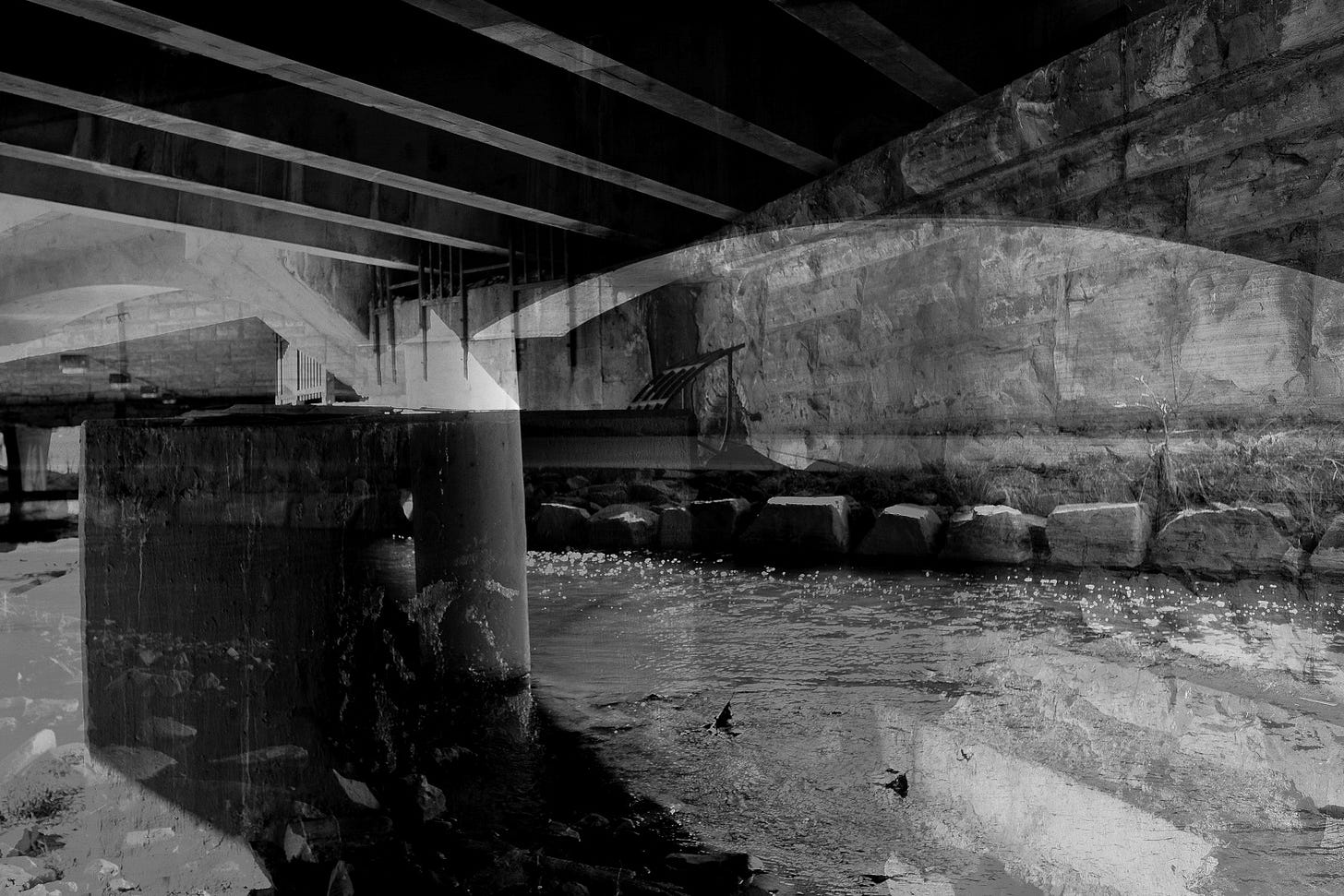

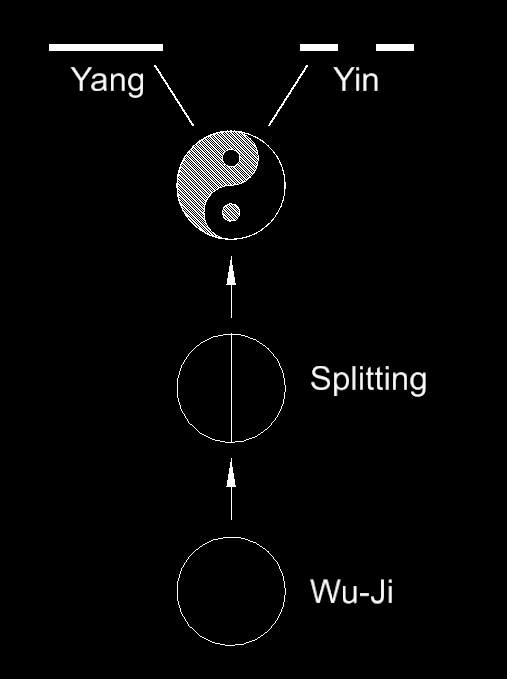
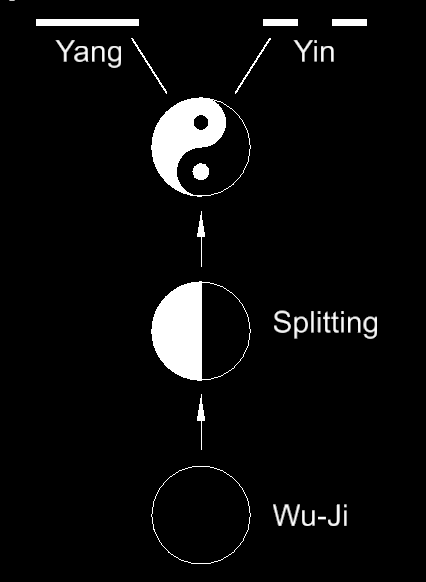
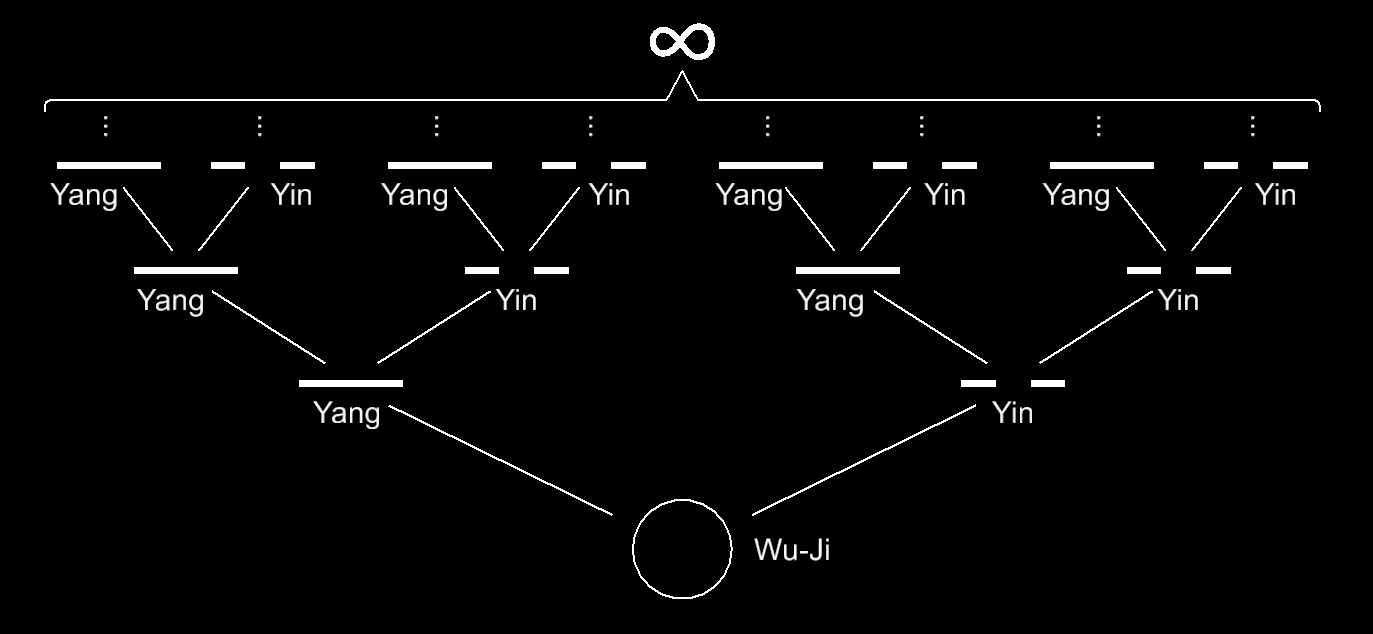
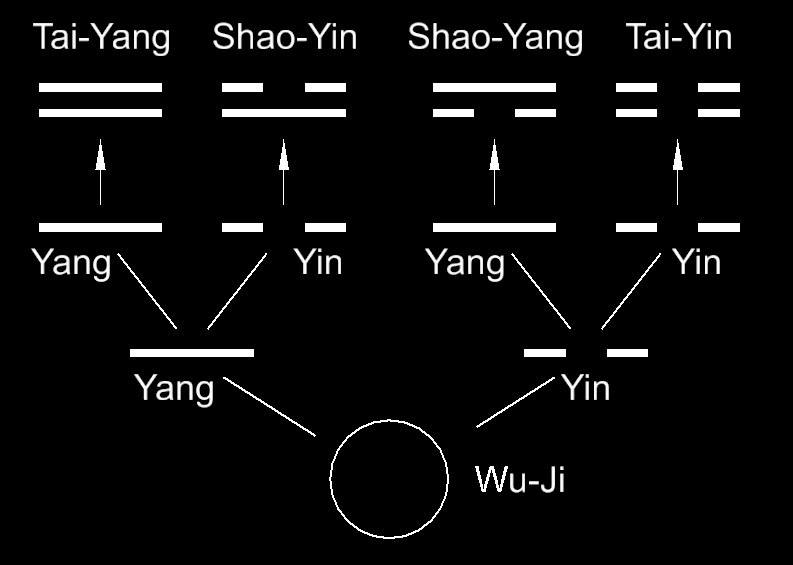
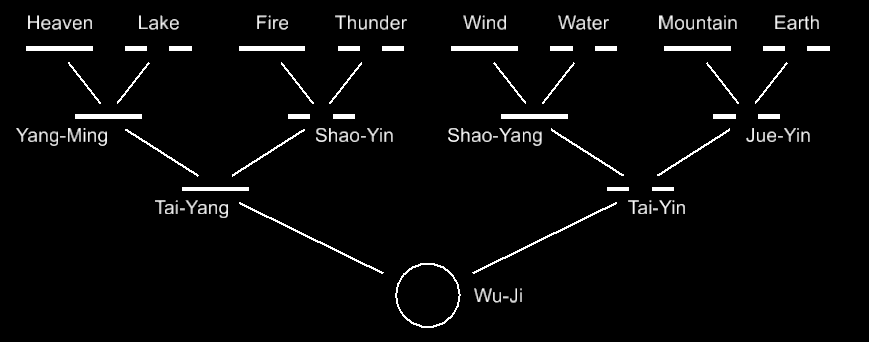

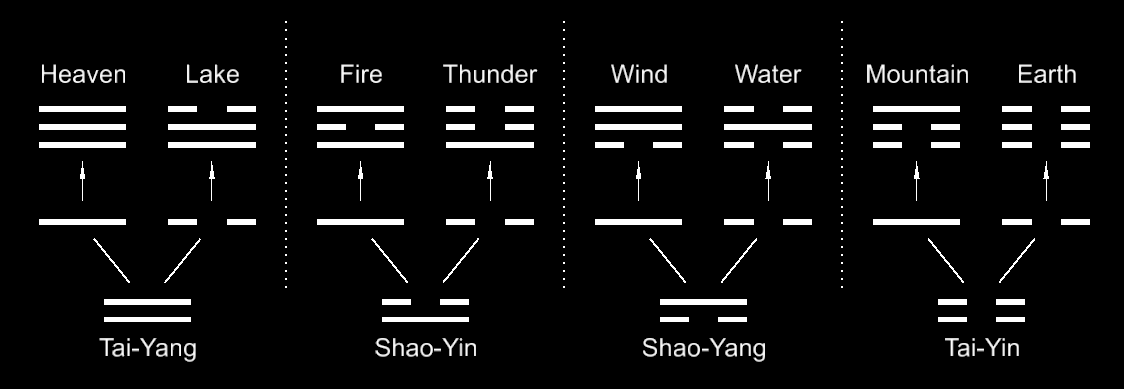
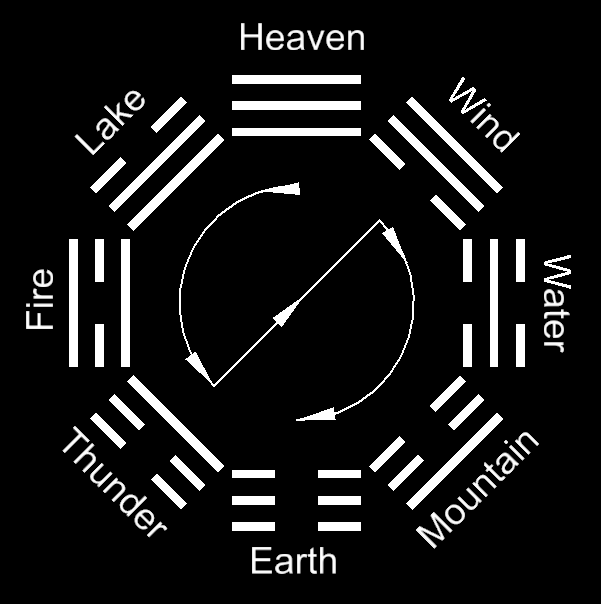
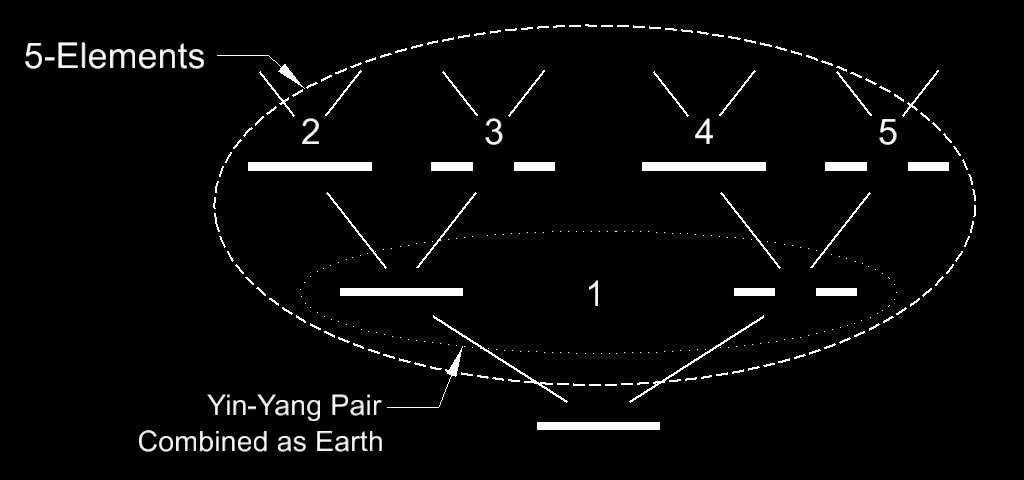
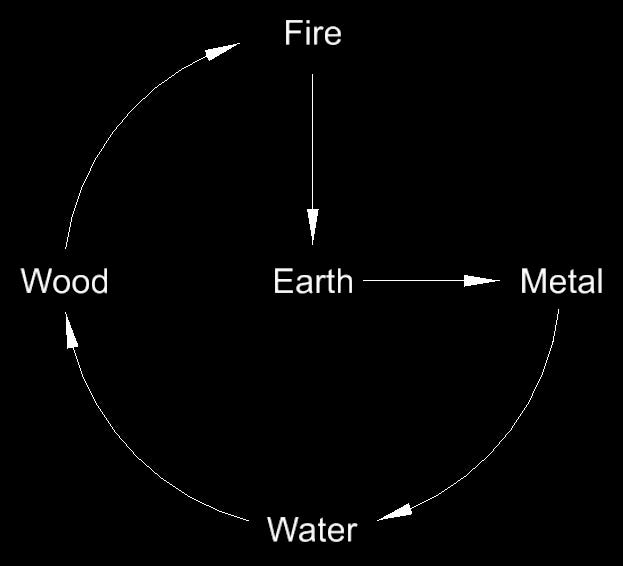
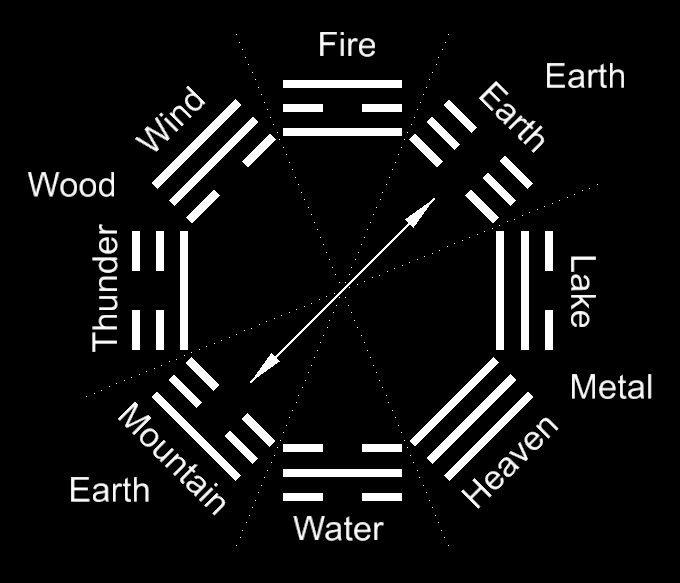
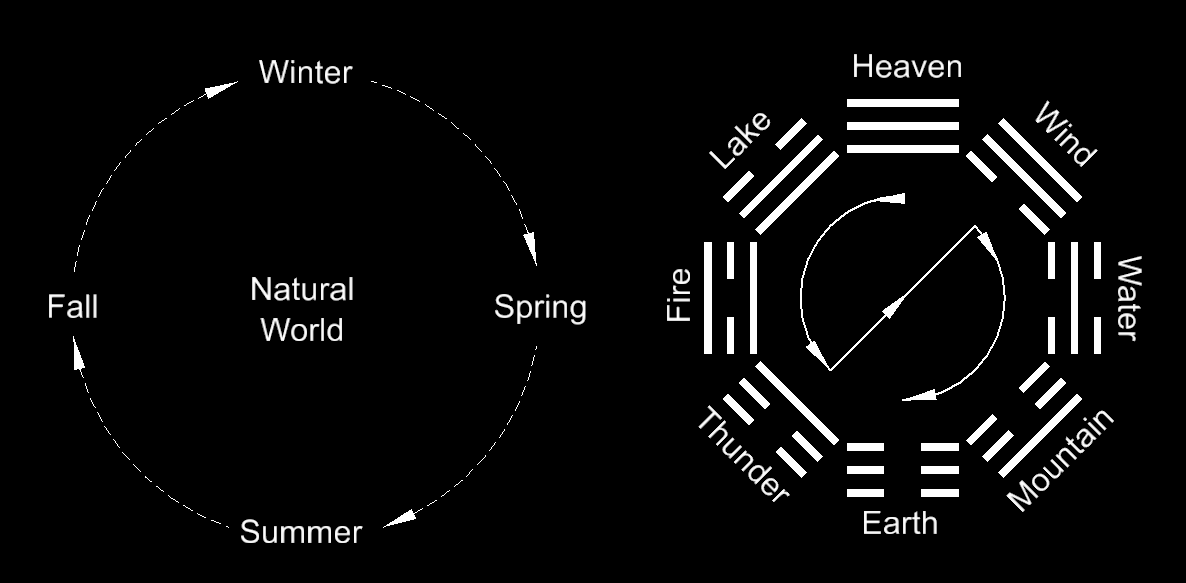
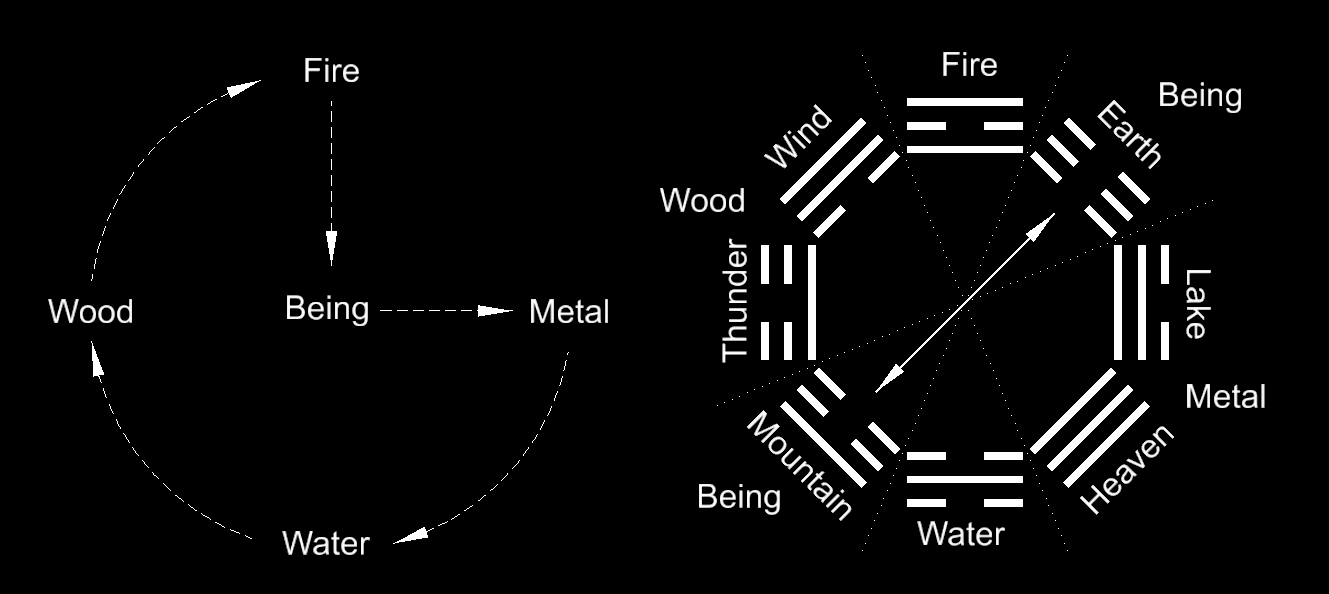
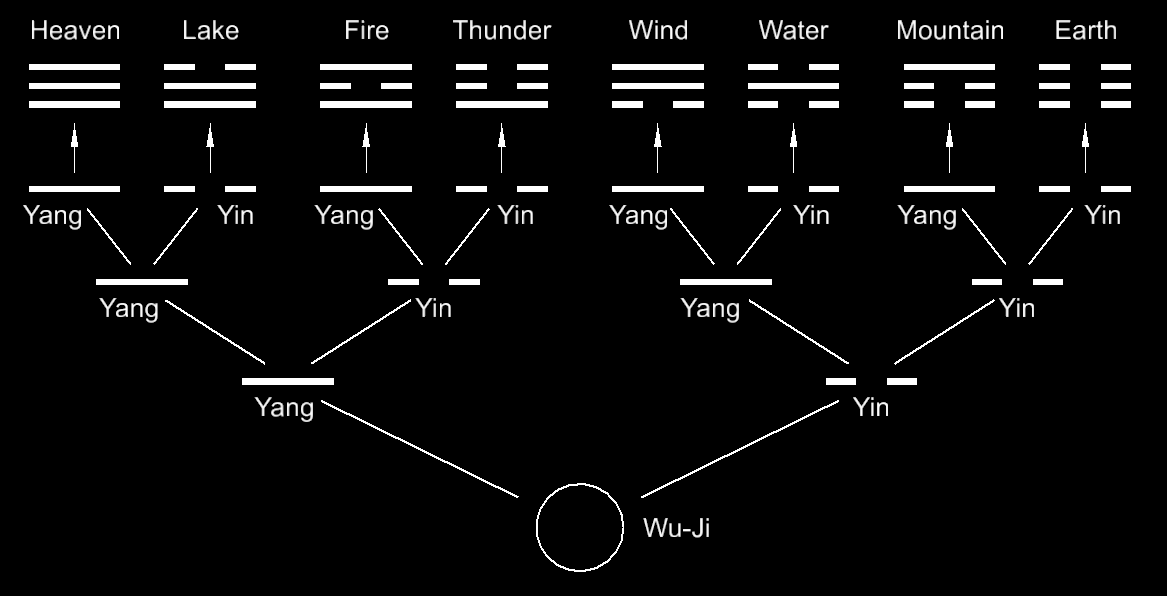

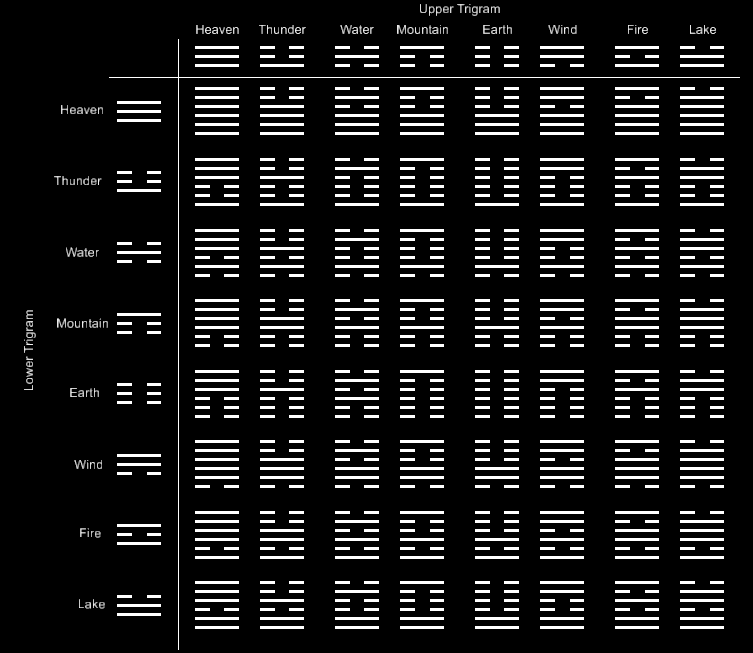
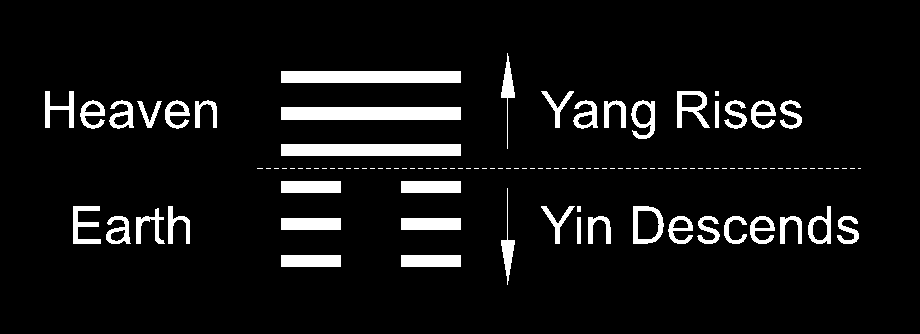
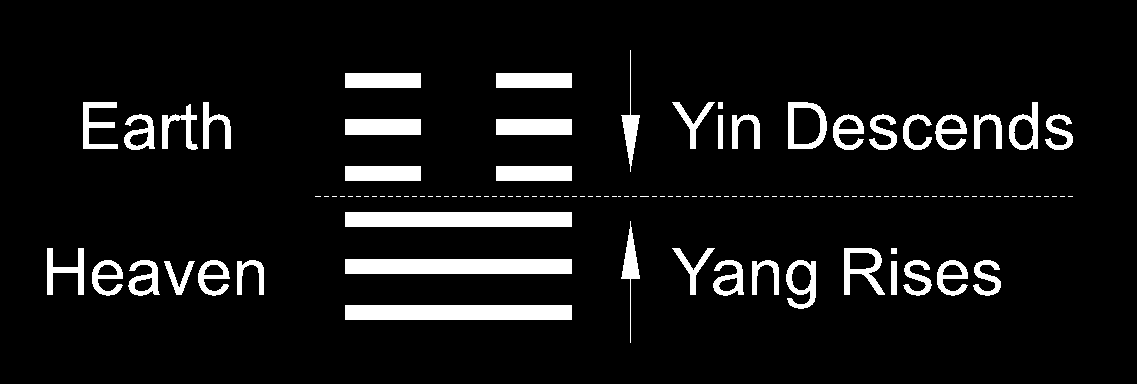
I am grateful for this in depth modern explanation of these ancient concepts. You relating real life experiences to your understanding enlightened my understanding. That’s what a gifted teacher does is make the concepts relatable to real life existence...you’ve done that so well!